Death Valley. Its name conjures up visions of sun-bleached cow skulls, rattlesnakes and desolate ribbons of asphalt shimmering in the desert heat.
But while these images are not far removed from reality, especially in the Great Basin, which holds the unflattering title of the hottest place on earth, I learned that there is much more to see and do in Death Valley than meets the eye – and much more life here – and water – than you would expect.
I also learned that names in Death Valley can sometimes be very telling, at other times deceptive, but there’s always a story behind each one.
Death Valley: The Name is Dramatic if Not Accurate
The name Death Valley is a bit of a misnomer, especially since it implies that large numbers of people met their doom here. Certainly one look at its sun-baked landscape of sandy basins and barren mountains would seem to support that theory.
But the truth is that the valley got its name from a group of gold rush pioneers who ended up wintering here in 1849-50, having gotten lost while looking for a short cut to the Sierra Nevada mountains.
Assuming this unforgiving place would be the death of them – quite literally – these ‘Lost 49ers’ as they came to be known to history were eventually rescued and led out of the valley by two of their own men who had scouted an escape route through the Panamint range surrounding the valley. As they were leaving, one of the men looked back to declare, “Goodbye, ‘Death Valley’“, and the name has stuck ever since.
More Life Here Than ‘Death Valley’ Would Imply
Despite its now infamous name, Death Valley has supported life here for centuries, in terms of flora, fauna AND humans. The Timbisha Shoshone band of Native Americans have survived here for generations by learning where to find food and how to avoid the worst of the heat and cold. And although it is one of the driest places in North America, Death Valley does see water in the form of snowmelt and rain, and when this comes, it comes in torrents.
I was actually surprised at how much green there was when we first drove into this desert, and how many dry washes there were everywhere, indicating that vast quantities of water do flow through here at times. In fact, this spring was the end of a 4-year mini-drought, with plenty of snowmelt that resulted in a ‘super bloom’ of desert wildflowers, a few of which still remained.
TIP: Flash flooding in Death Valley comes with little warning and can literally sweep people away, especially if you are in narrow canyons, so be sure to check with the National Park Visitor Centre for conditions before setting out on any hikes.
Badwater Basin: The Right Name for a Very Hot, Very Cool Place
In a desert, you would think that any mention of water would be a good thing, but in the case of Badwater, the name is an accurate indication of what to expect. Badwater Basin is the site of a small spring-fed pond of water, but unfortunately because of the high concentration of accumulated salt on the surface here, that water is exactly what the name suggests: undrinkable.
That same salt does make for a dramatic landscape, however, and is actually what draws people here today to see an interesting phenomenon: polygon-shaped patterns in a huge salt basin.
These patterns are formed when rain or ground water repeatedly freezes, thaws and evaporates, pushing up the dissolved salt in the ground which forms a thin crust that dries in polygon-shaped patterns. The farther out you walk from the road, the whiter and flatter these honeycomb shapes become, until eventually the whiteness stretches across the horizon in a vast salt pan, one of the largest on the planet.
The Lowest Point in North America
That white expanse drew me in, and I was determined to walk out to where the salt polygons would surround me, but I soon learned not to underestimate distances in a desert, as it took me a good 15 minutes just to get to the edge of the widest part of the salt pan. Still, I got to see enough of this strange landscape to get a feel for its other-worldly character before turning back to rejoin my group at the road.
The journey was well worth hiking in the early June heat because now I can say I walked in Badwater Basin, Death Valley, which doesn’t just have a badass name and some pretty alien desert landscapes, but is also the lowest place in North America at 282 feet below sea level. How cool is that for one of the hottest places in the world!
TIP: The place where the boardwalk leads you out to the Badwater salt pan is actually only 132 feet below sea level, with the lowest point a few miles west. But rather than walk there myself, I’ll take their word for it!
Old Harmony Borax Works
Salt may bring tourists like myself to Badwater Basin, but it was another mineral that originally drew entrepreneurs to Death Valley: borax. Discovered here in 1881 near a place originally named Greenland (another misleading choice that was changed shortly after to Furnace Creek), borax is another product found naturally in Death Valley because of the evaporation of ancient saline lakes. It became a popular commodity that was used in household cleaning products and for a while it looked like mining Borax would be a lucrative industry for Death Valley.
But it soon became obvious that the processing of borax needed to be done elsewhere, away from the extreme heat of Death Valley. Miners hauled the excavated product out of the valley using 20-mule teams pulling wagons loaded with up to 36 tons of the material. It is because of this that many of the Borax products were branded ’20 Mule Team Borax.’
Another Misnomer: The ’20 Mule Teams’ were actually comprised of 18 mules that were led by 2 horses (since they were considered more intelligent than the mules.) I guess the 20 Mule brand was a catchier brand name than ’18-Mules-and-2-Horses-Team Borax’…
Mining borax in Death Valley proved to be too expensive and ultimately, the industry failed. Today, the remnants of one of these mines, known as Old Harmony Borax Works, serves as an outdoor museum in Death Valley where visitors can come to see what these wagons looked like and learn more about the mining process.
Death Valley Named the Hottest Place on Earth
Unlike 20 Mule Team Borax, ‘Furnace Creek’ in Death Valley couldn’t be more aptly named, since it was here where the hottest temperature on earth was recorded on July 10, 1913 – a record that still stands today. (134 degrees Fahrenheit or 56.7 Celsius). In fact, for 5 consecutive days that July, Death Valley recorded the hottest temperatures on the planet.
More recently, Death Valley has also broken the record for the hottest monthly temperatures anywhere in the world for 2 years in a row (2017 and 2018) with average temperatures of 107.4 degrees and 108.1 respectively. Yikers. (Nevermind that ‘it’s a dry heat’ – those numbers are a little extreme even for me.)
Hollywood Loves Death Valley
The extreme climate and barrenness of Death Valley may have made it near impossible for people or industry to thrive here, but its dramatic, forbidding landscapes have made it the perfect backdrop for Hollywood movies for decades. In fact, there have been dozens of films shot here.
From early westerns like Yellow Sky and The Gunfighter starring ‘Old Hollywood’ legends like Gregory Peck, to historical epics like Spartacus and The Greatest Story Ever Told, to modern ‘New Hollywood’ classics like Star Wars: a New Hope, Death Valley has played a key role in helping bring to life the imagination of film makers.
U2 Fans Can Follow in the Band’s Footsteps at Zabriskie Point
Music legends have found creative inspiration in Death Valley, too, the most famous of which is undoubtedly U2, thanks to their Joshua Tree album cover.
That pensive, youthful portrait of Bono et al was actually shot by photographer Anton Corbijn at Zabriskie Point, a popular overlook in the National Park where visitors can admire one of Death Valley’s most dramatic and beautiful formations of sculpted rocks and hills.
FUN FACT: There are other A-list musical connections to Zabriskie Point, thanks to a 1960’s counterculture film, Zabriskie Point which featured music by Pink Floyd, the Grateful Dead, and The Rolling Stones.
The Door’s song L.A. Woman was originally recorded for the film but was later rejected by the director, and the song was released instead on the Doors’ own album of the same name.
The Life and Death of U2’s actual Joshua Tree
What about that lone Joshua Tree after which U2’s album was named? Ironically, U2’s Joshua Tree is NOT found in Joshua Tree National Park, but here in Death Valley instead. Or rather, it was here until 20 years ago. Sadly, the tree was blown down in a windstorm in 2000 and it’s now only a matter of time before it becomes part of the desert sands itself.
The demise of the actual Joshua tree hasn’t deterred fans who continue to make pilgrimages here and leave tributes of music lyrics and other artefacts at the site, the best of which might be a concrete and bronze plaque made by superfan Ernie Navarre that reads: Have You Found What You’re Looking For?
TIP: GPS coordinates for the location of U2’s Fallen Joshua Tree on Highway 190 are 36.330824, -117.745298 OR 36°19’51.00″N, 117°44’42.88″W (I found them on 2 different sites so I can’t say for sure which is 100% accurate, but either should get you close!)
Death Valley: A Land of Dreams and Extremes
As many of the rangers in the National Park love to say, Death Valley is a “Land of dreams and extremes”. The hottest, the lowest, and one of the driest spots you might ever visit, this is a place where water can keep you alive or kill you with spontaneous flash floods, and where fluctuating temperatures can fry you during the summer or freeze you to the bone in winter.
But Death Valley is also the place where indigenous people, pioneers, entrepreneurs, movie makers and musicians have brought their dreams and imagination to life, ironically in a place whose very name would suggest it was impossible.
Death Valley Practical Info:
Getting there: Death Valley is about a 5 hour drive from Los Angeles and there aren’t many places to stop along the way. So leave with a full tank if you are driving and bring snacks. If you do need to top up your tank or your stomach, Baker is a rest stop about 2.5 hours from L.A. where there are a handful of places to get food and [very expensive!] gas.
The most notable place here is a gift shop boasting the world’s tallest thermometer where there’s also a cast iron frying pan out front with ‘eggs’ cooking that is kind of fun (apparently, the pan needs to reach 158 degrees Fahrenheit to actually fry an egg, and you can check its temperature inside the gift shop!)
Where to Stay in Death Valley: Luxury awaits at the Oasis in Death Valley, a privately-run piece of paradise in the middle of Death Valley National Park. Palm trees, lush grounds and a large pool (with a very ‘grownup’ 8-foot deep end) are just a few of the unexpected amenities you’ll find here in the desert, all thanks to a huge underground nearby aquifer that supplies the property.
The property has undergone a 100 million dollar renovation and offers fine dining, elegant rooms and all the amenities of a deluxe property. After a day of desert adventures, this truly is an oasis of comfort where you would least expect it.
But perhaps the best feature of all at the Oasis in Death Valley are the spectacular views of the surrounding desert offered here, both day and night.
Take a glass of wine up to the 4th floor terrace and watch as the stars come out in the billions. Or check with the hotel as they often host astronomy evenings at their nearby sister property, The Ranch at Death Valley. Death Valley is the largest Dark Sky designated National Park in the U.S., and I can honestly say that I saw so many stars here, I had trouble finding the Big Dipper amongst them!
Death Valley Tips
Check in at the National Park Visitor Centre at Furnace Creek before heading out to do any hiking or exploring in the Park. It’s open year round, 24 hours a day, and offers plenty of information on desert flora and fauna, as well as popular sights in the Park.
Drink Water! In the desert, this is no idle recommendation, and as the official HOTTEST PLACE ON EARTH, you need to constantly stay hydrated and put even more into you than you’re getting rid of. In fact, if you use the washrooms in the Visitor Centre, you’ll notice a pee chart that shows you what colour your urine should be. (Think Pinot Grigio, not amber ale!)
Hiking in Death Valley: The rangers recommend that you don’t hike after 10am in the warmer months, especially in summer when temperatures are over 100 degrees F. Some of the park trails are actually closed during these times. If you are hiking in the Park, it’s a good idea to let people know where you are going and when you expect to be back.
Driving: Most of the major sights like Zabriskies Point, Badwater Basin, Old Harmony, the Artists Palette, Dante’s View and more are easily accessible in any type of vehicle. But some locations do not allow long vehicles (think buses, large RVs, etc because of the road conditions. Again, check with the Visitor Centre and if you are driving off the main routes, let them know where you are headed.
Special thanks to Visit California who hosted my trip to Death Valley.

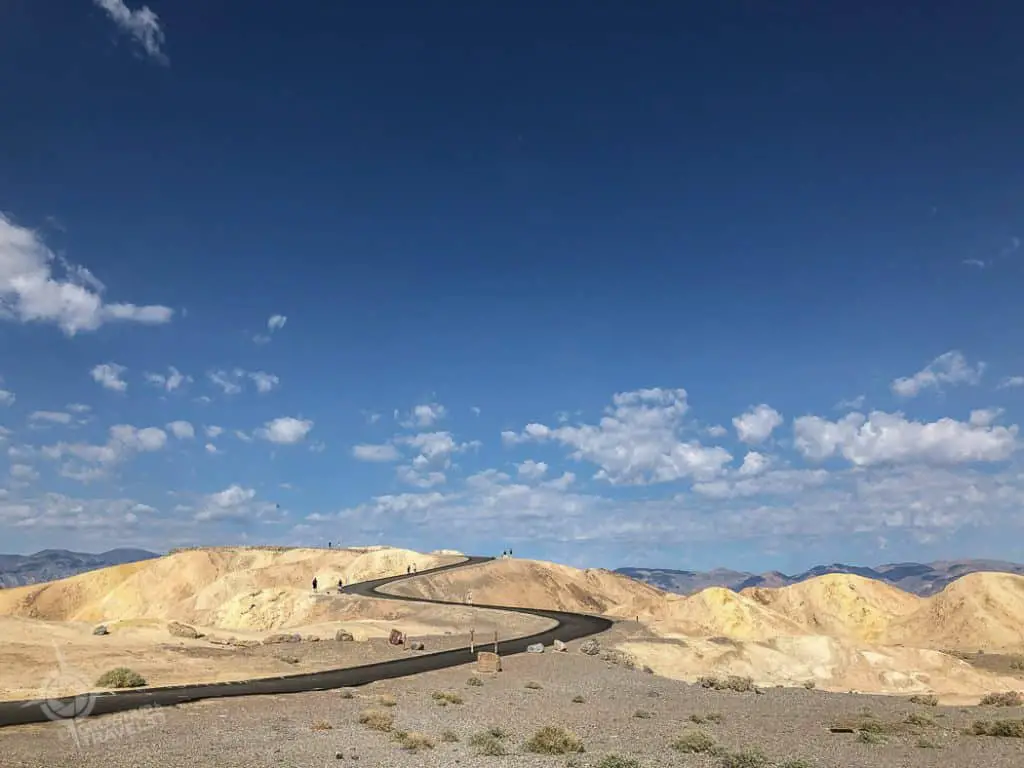
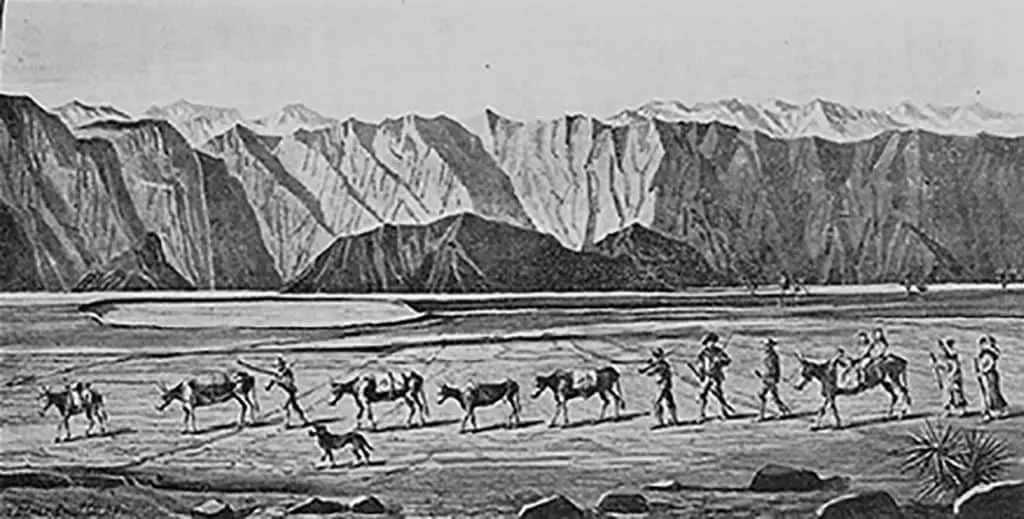
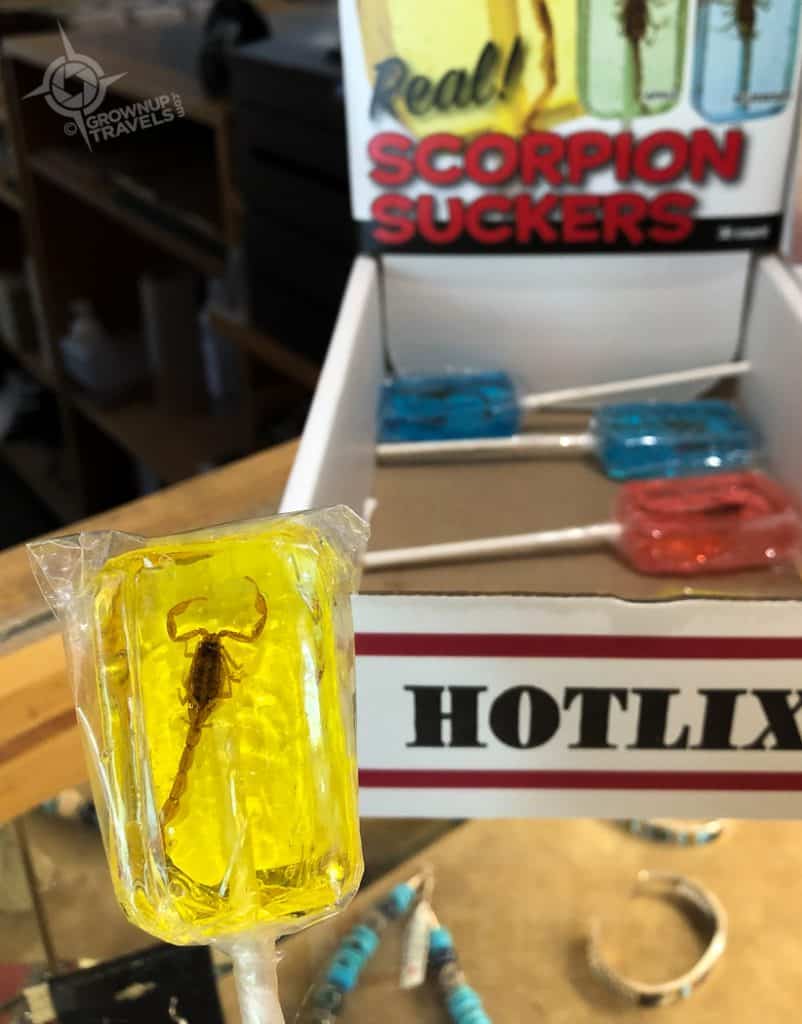
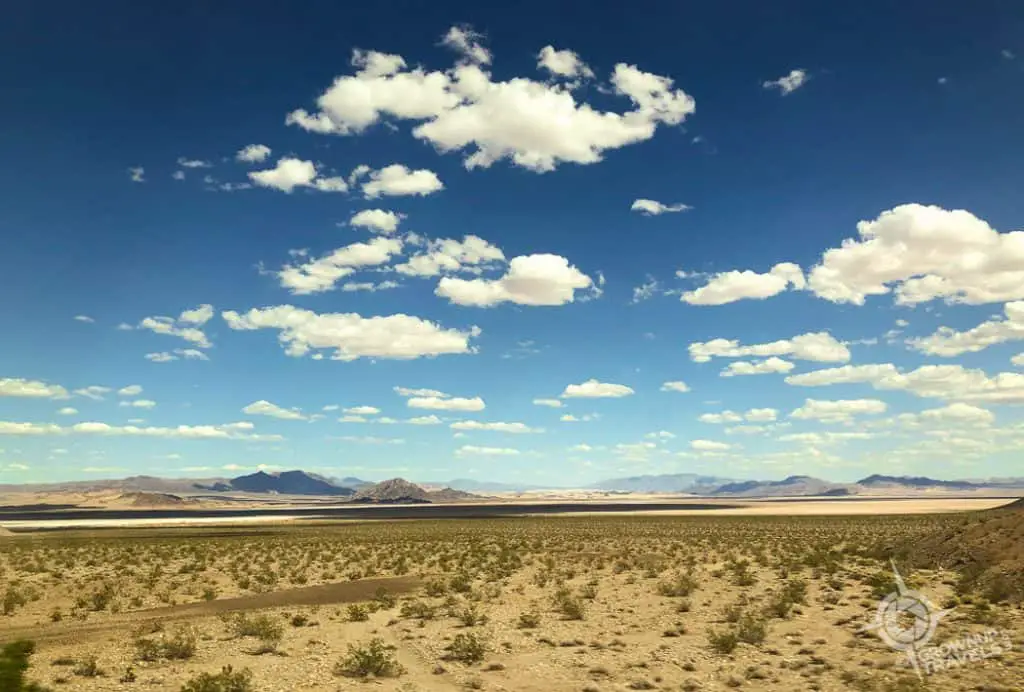
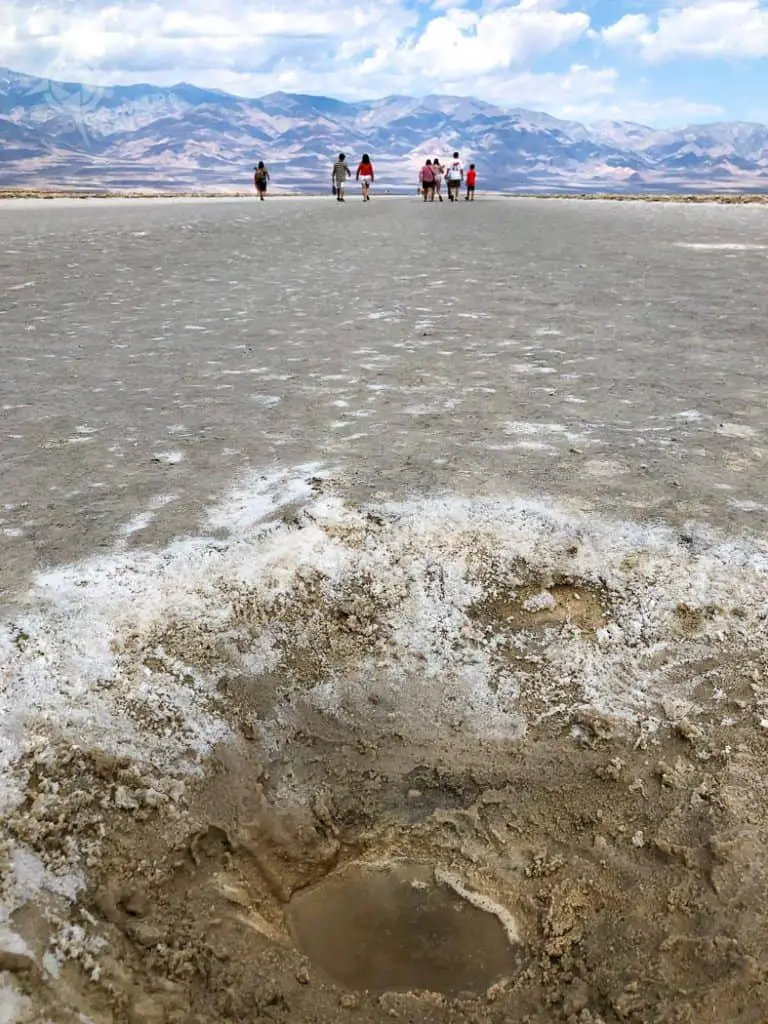
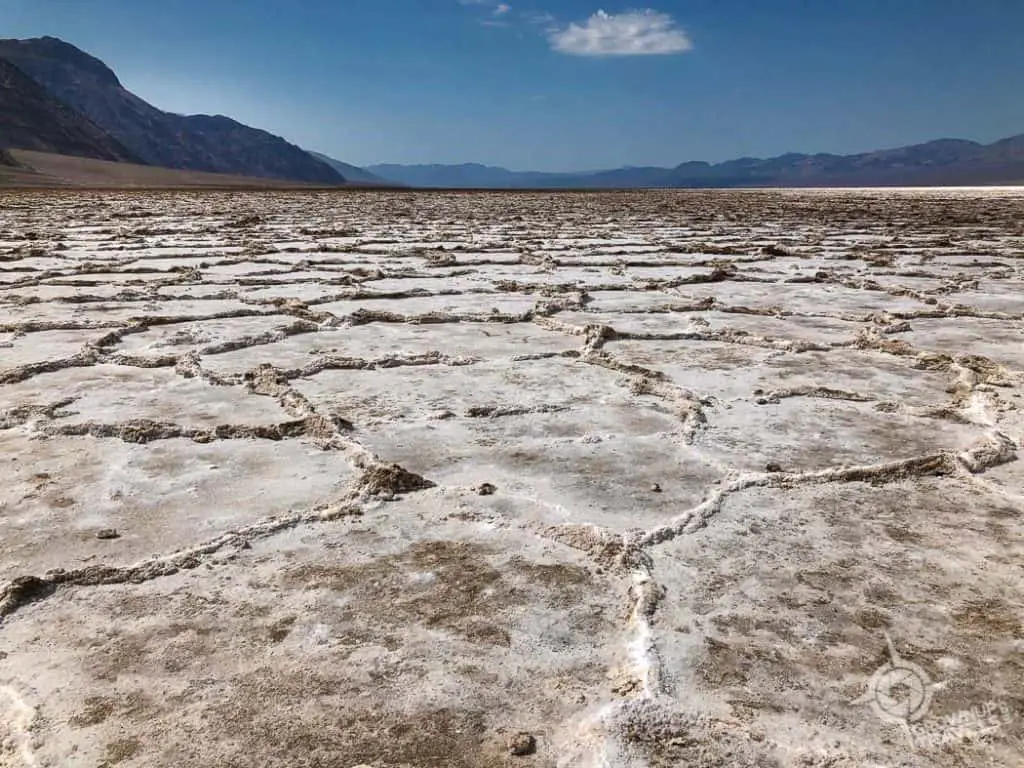
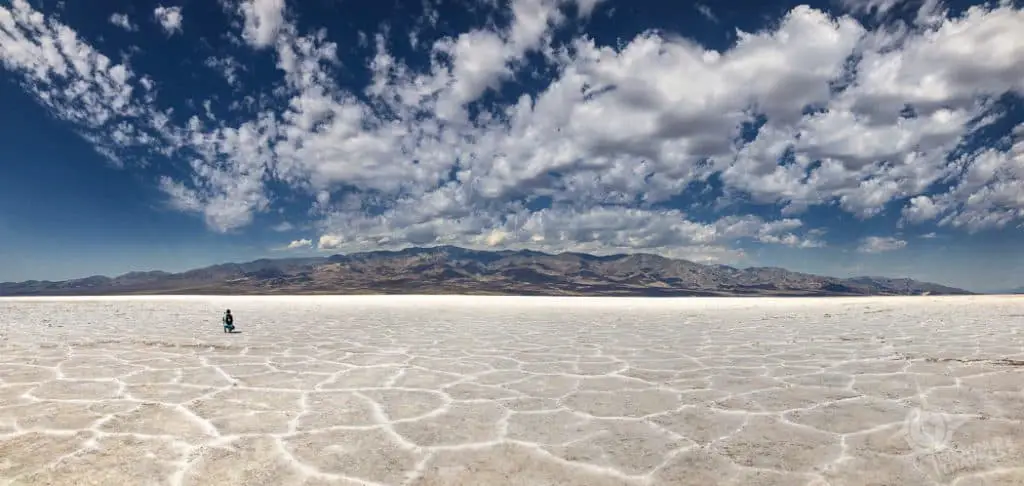
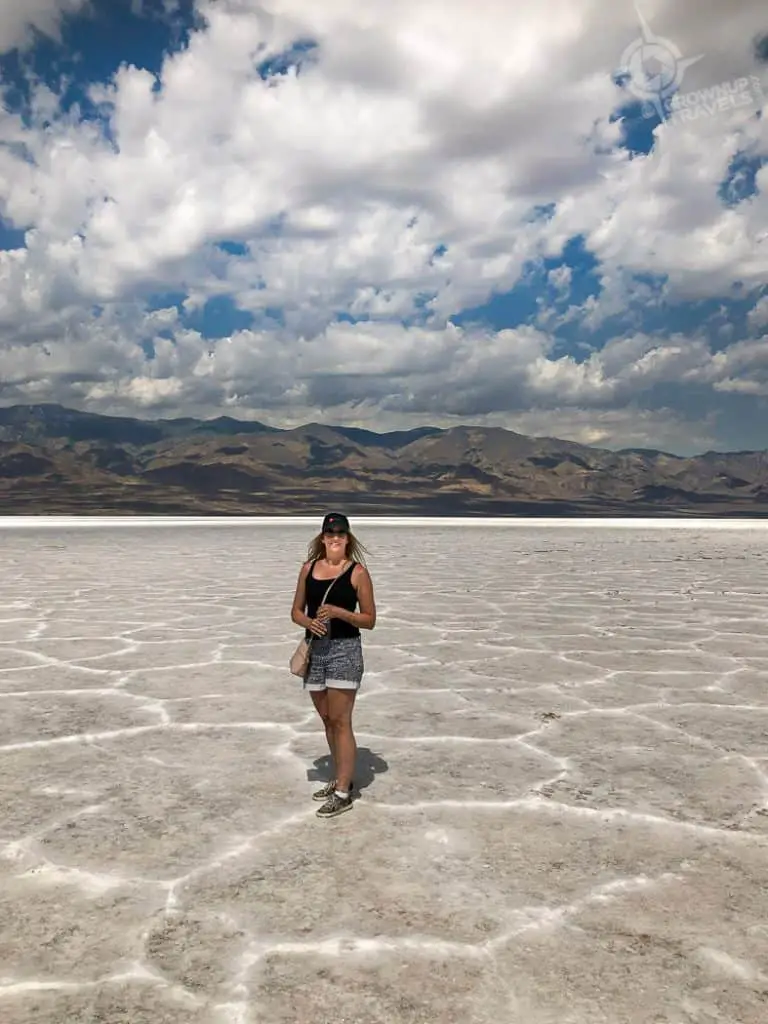
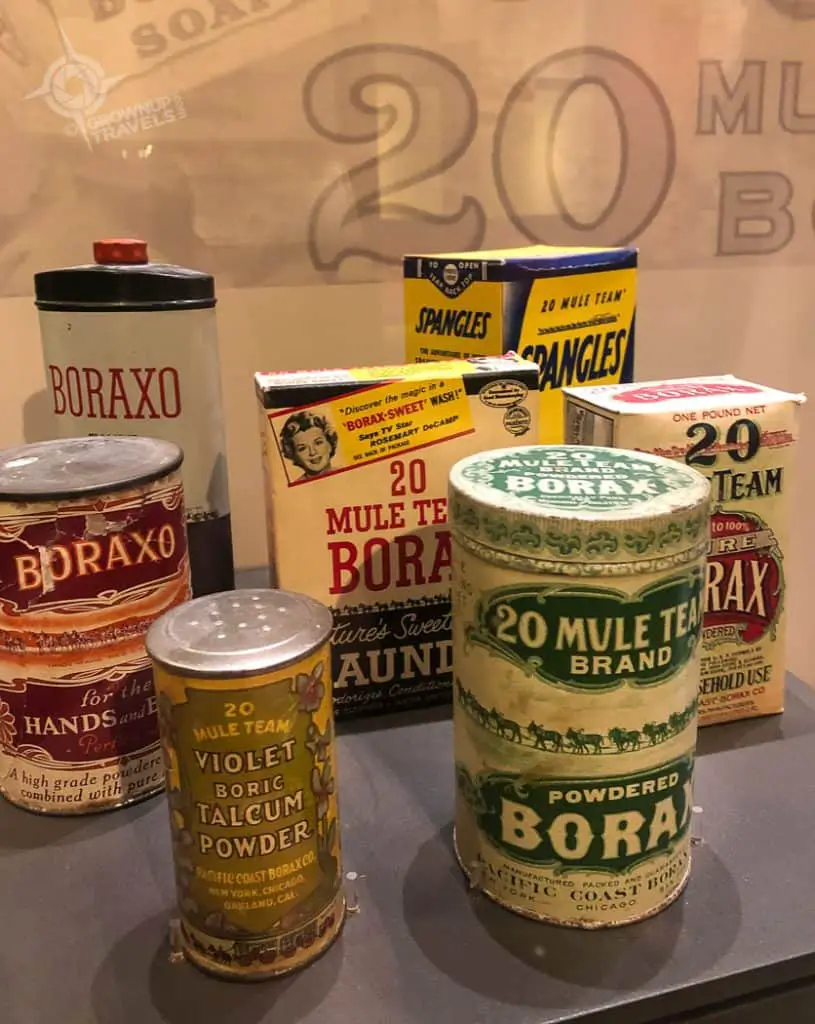
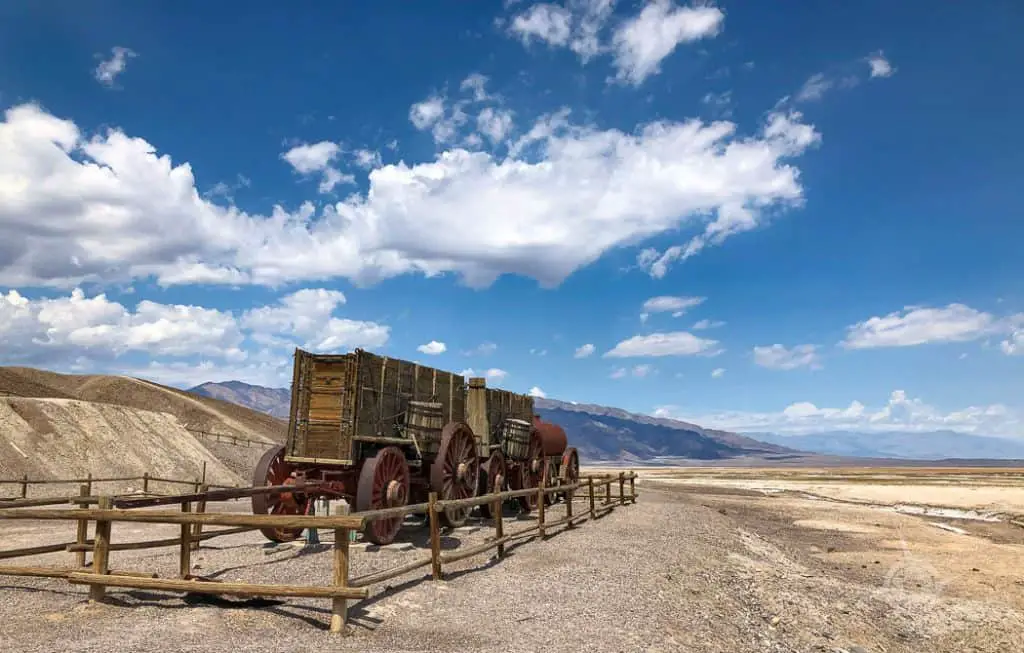
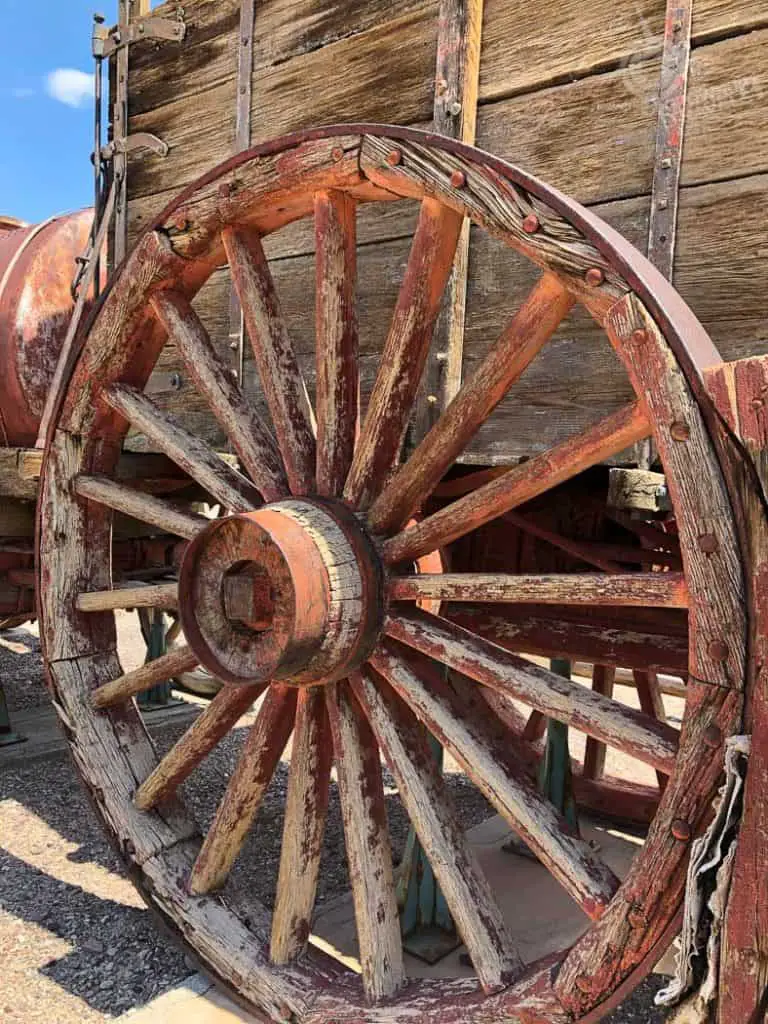
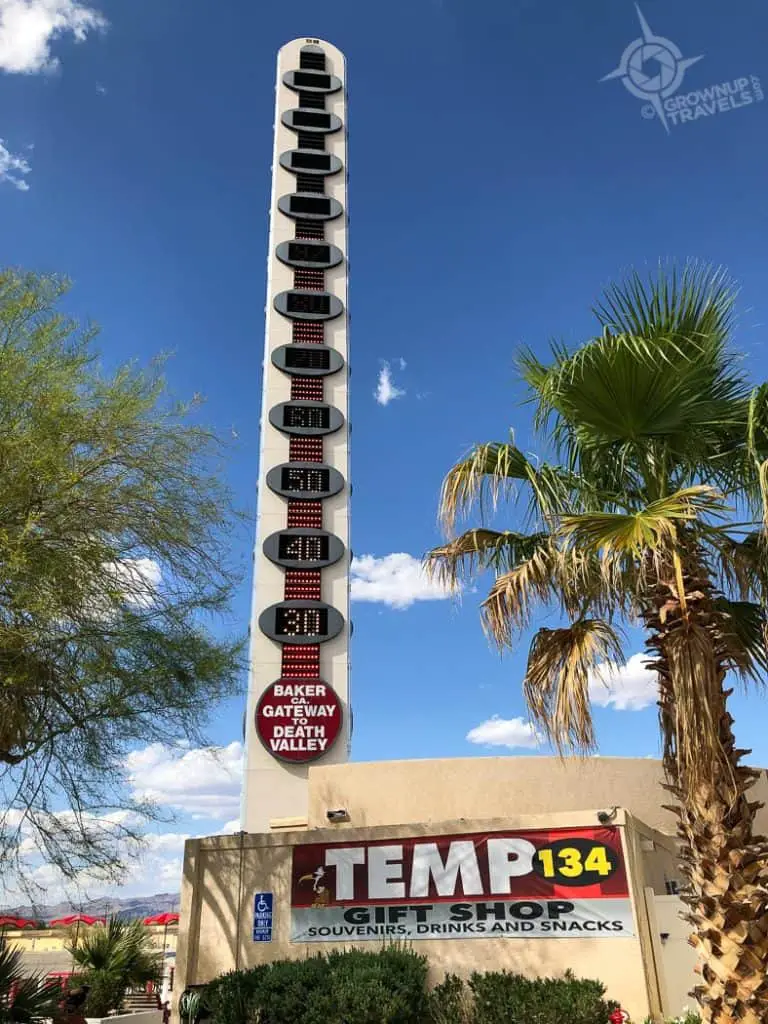
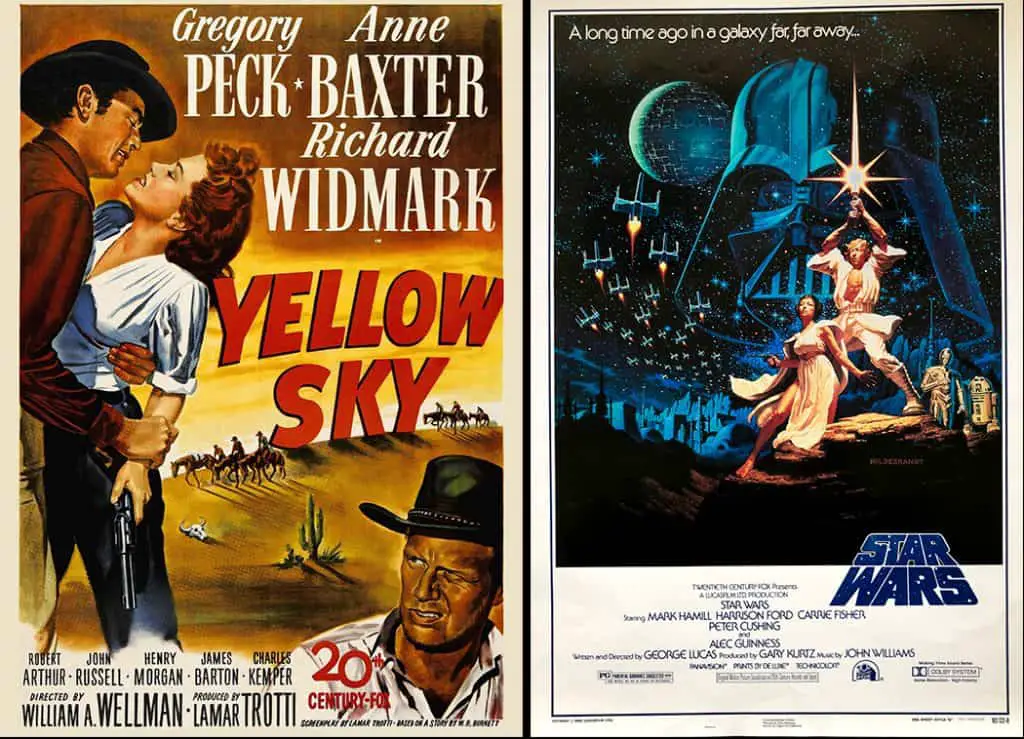
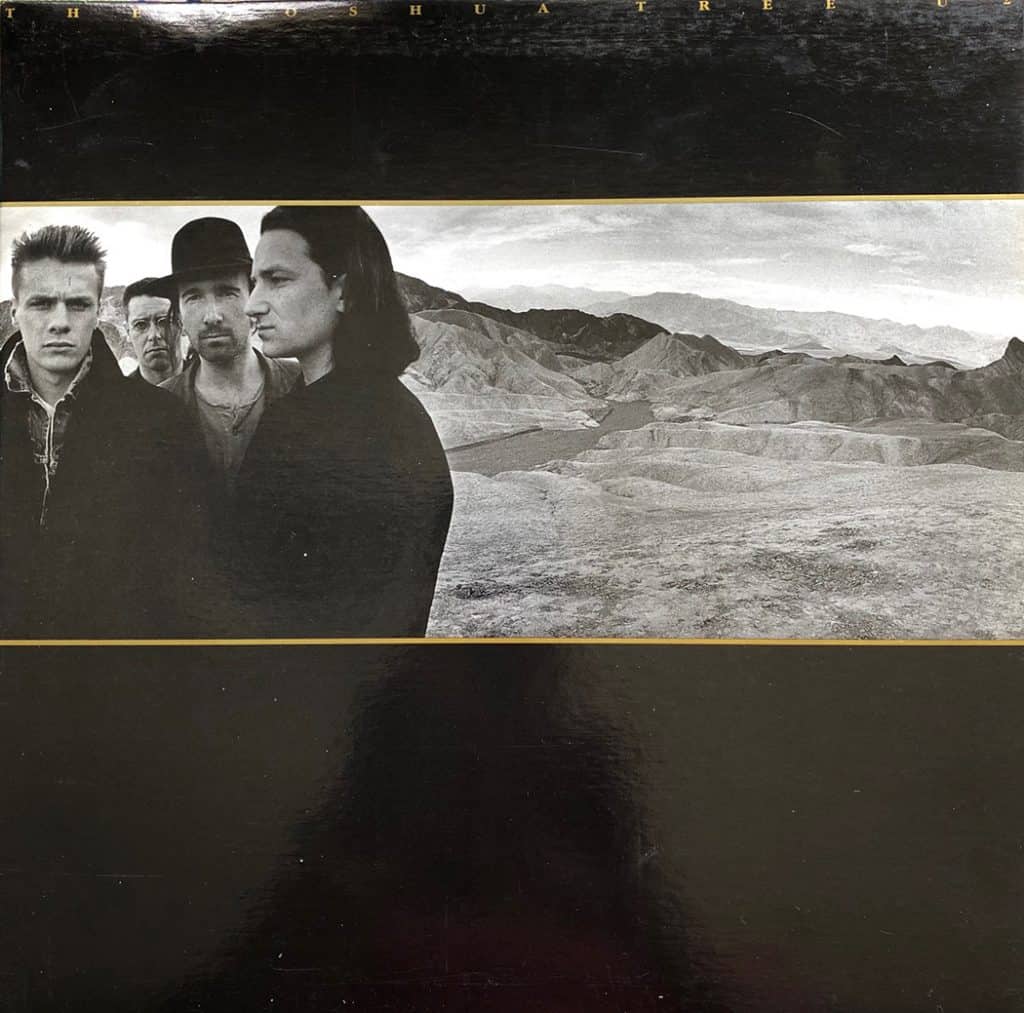
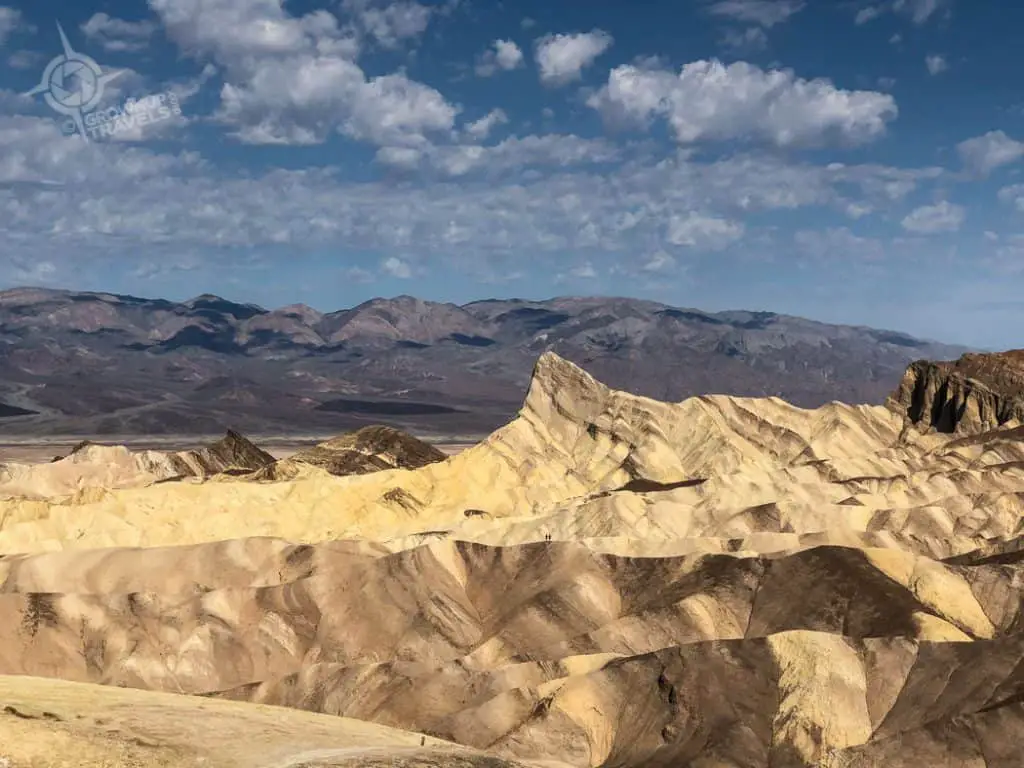
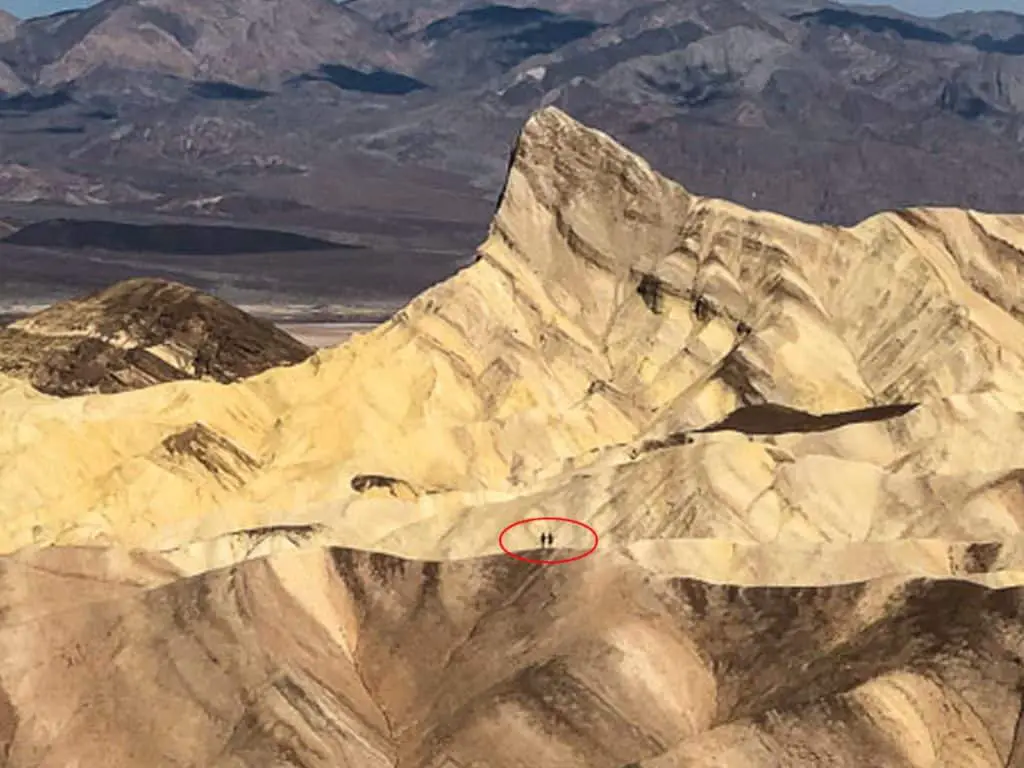
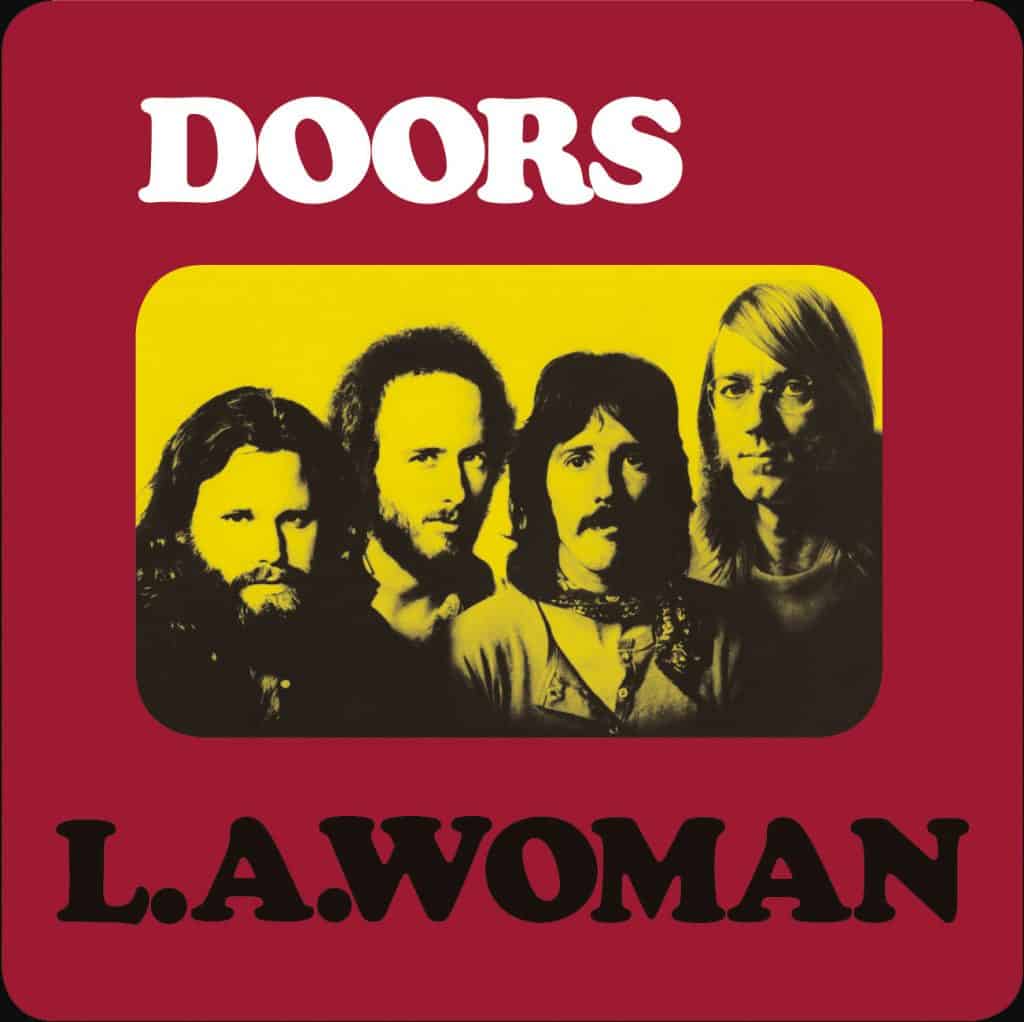
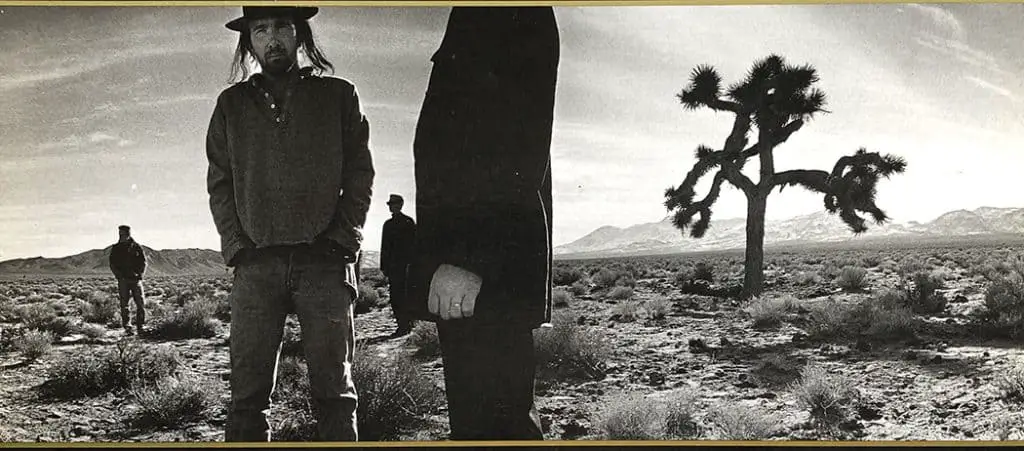
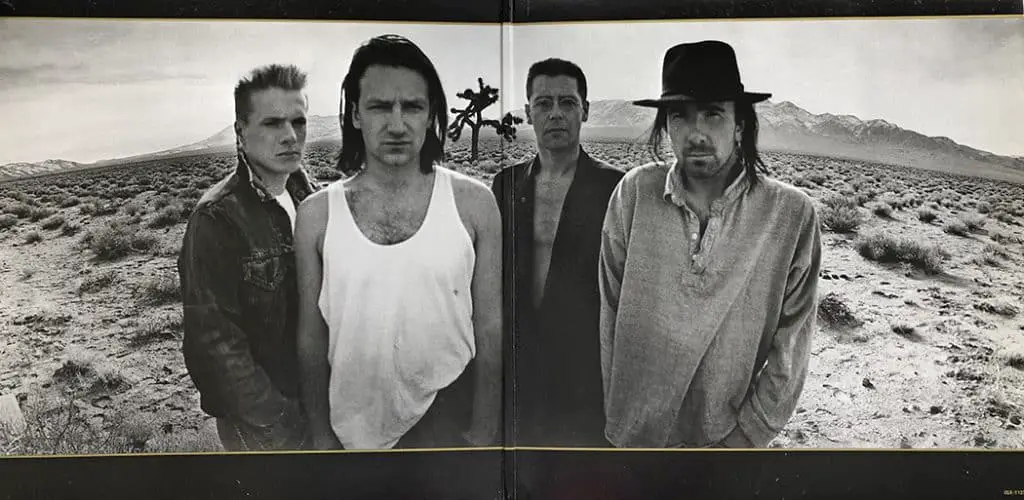
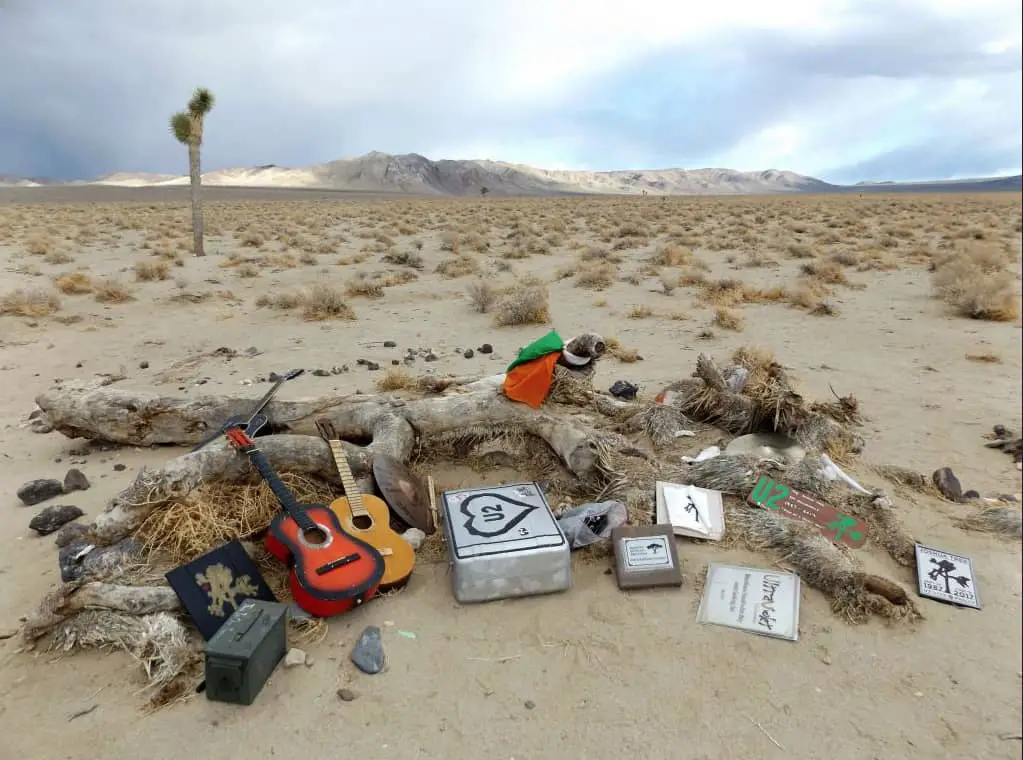
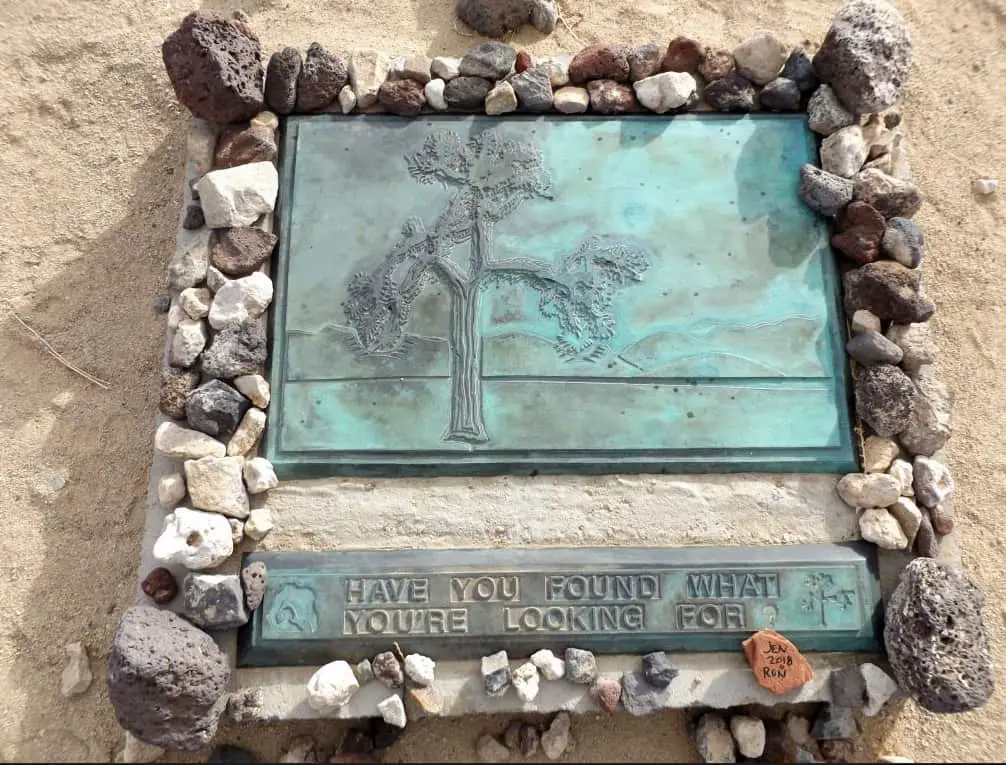
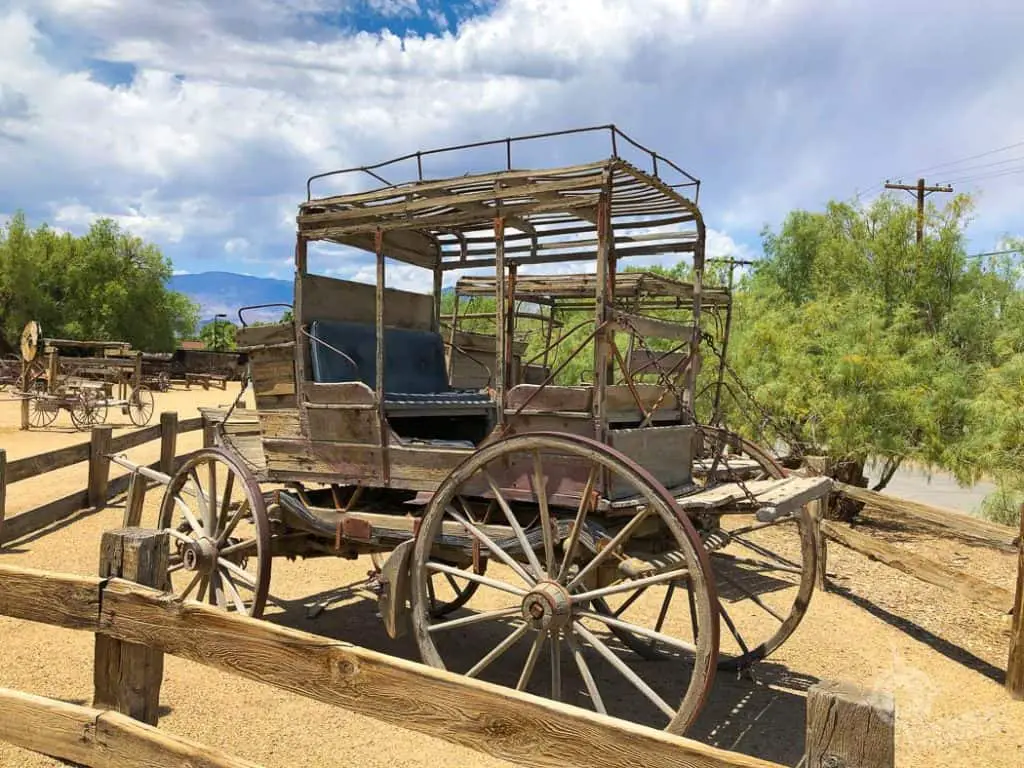
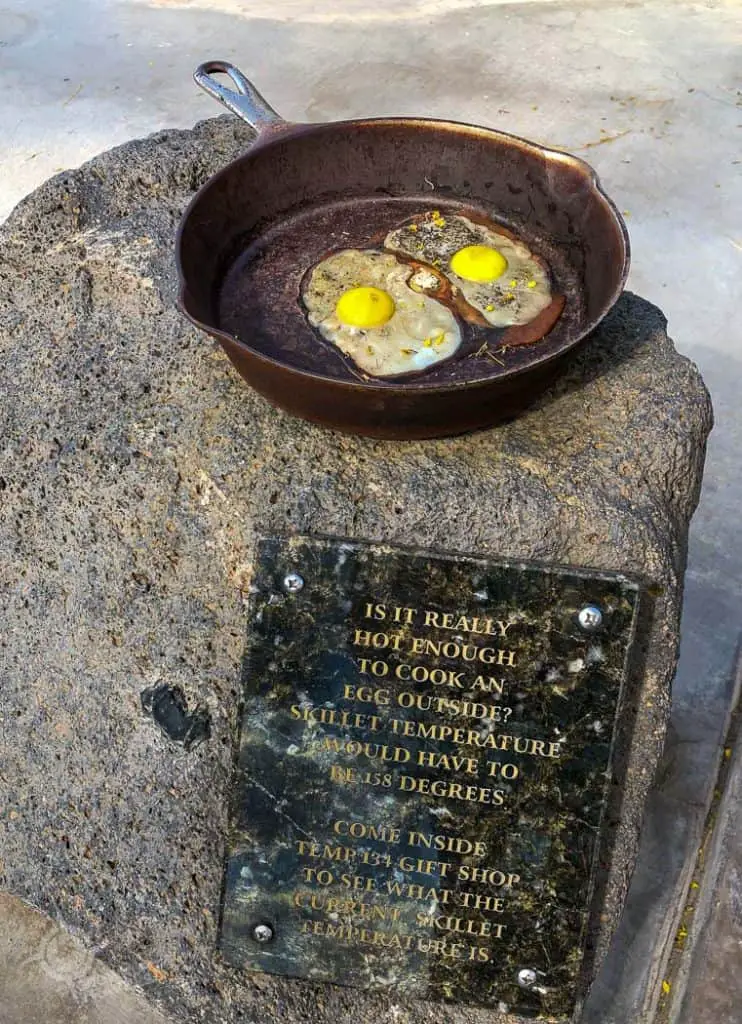
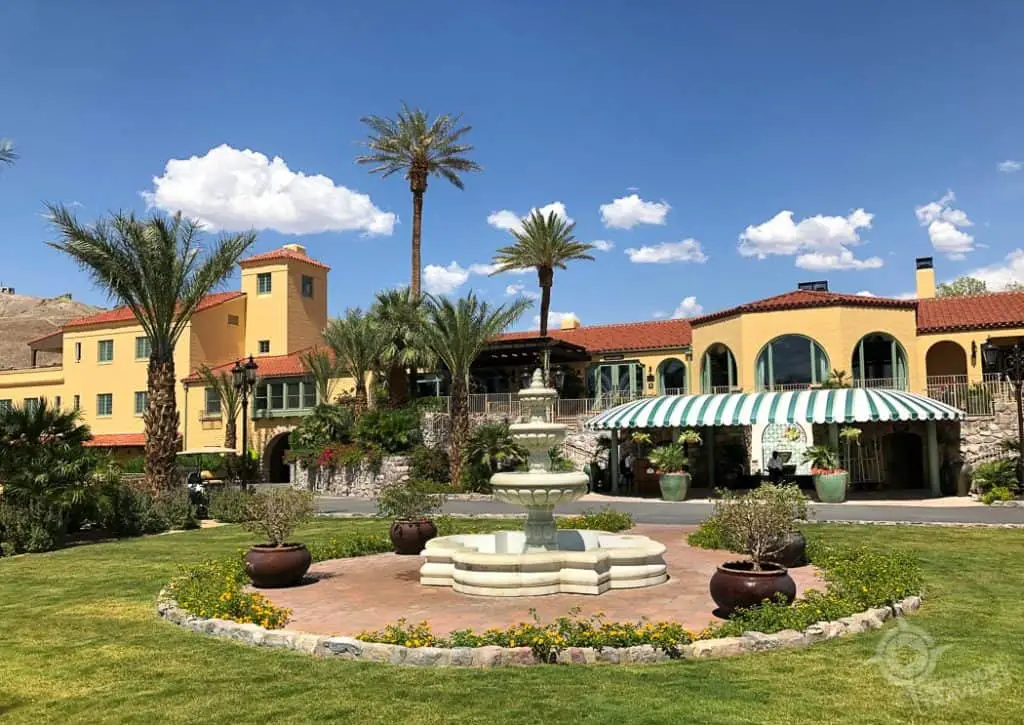
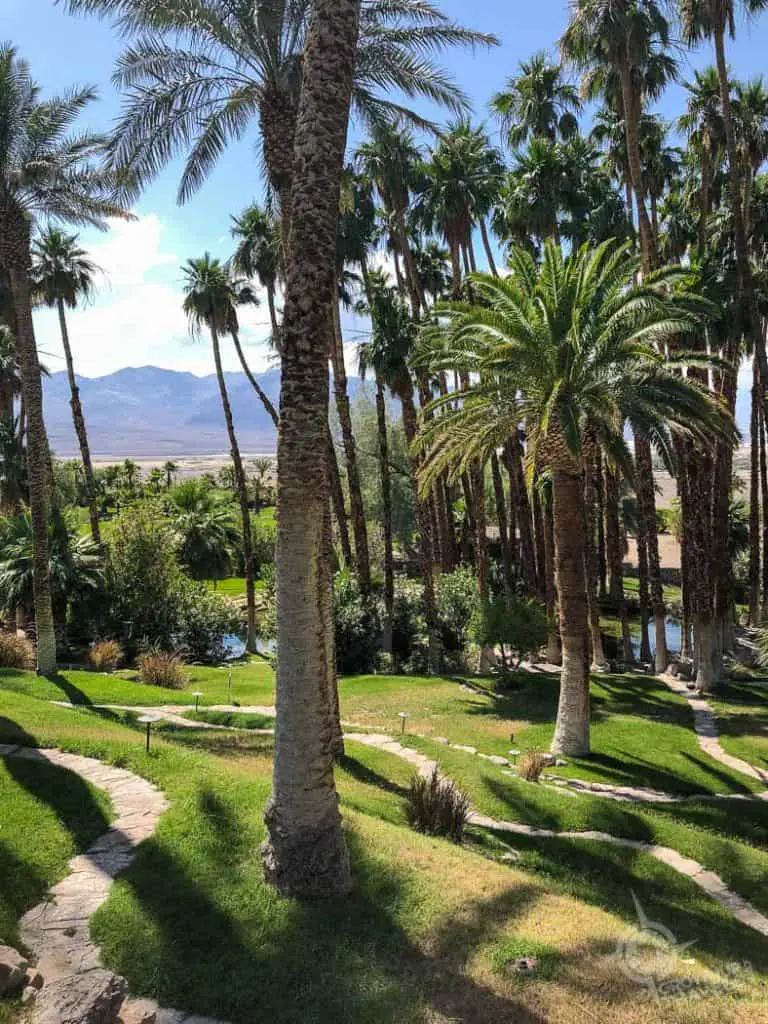
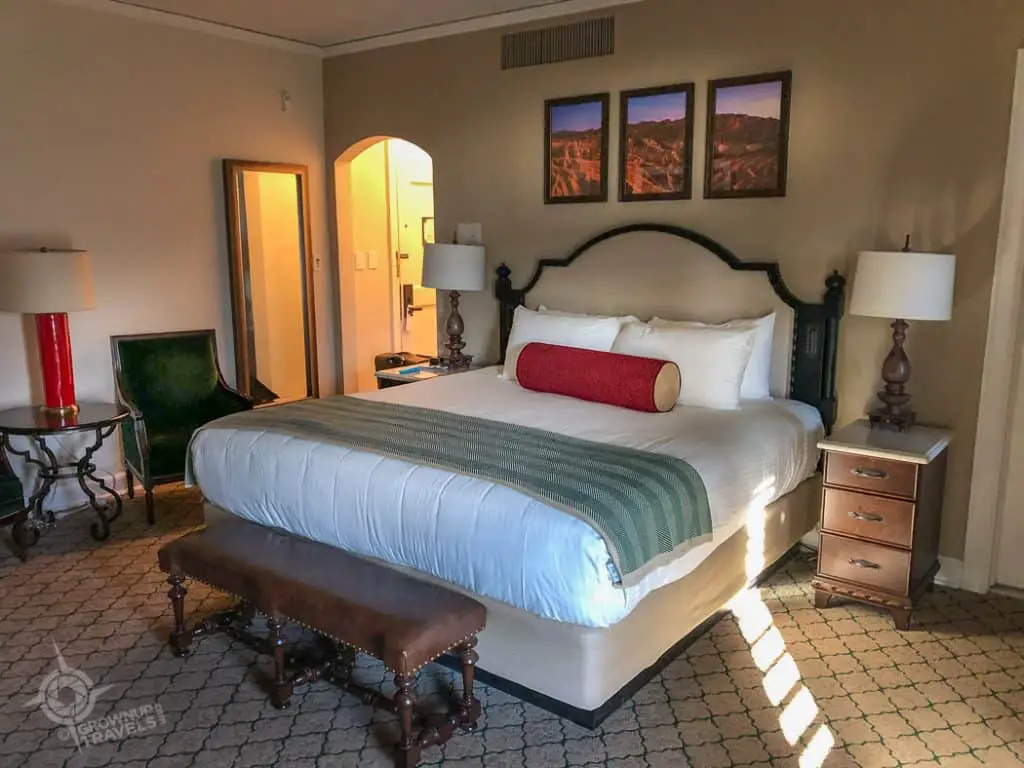
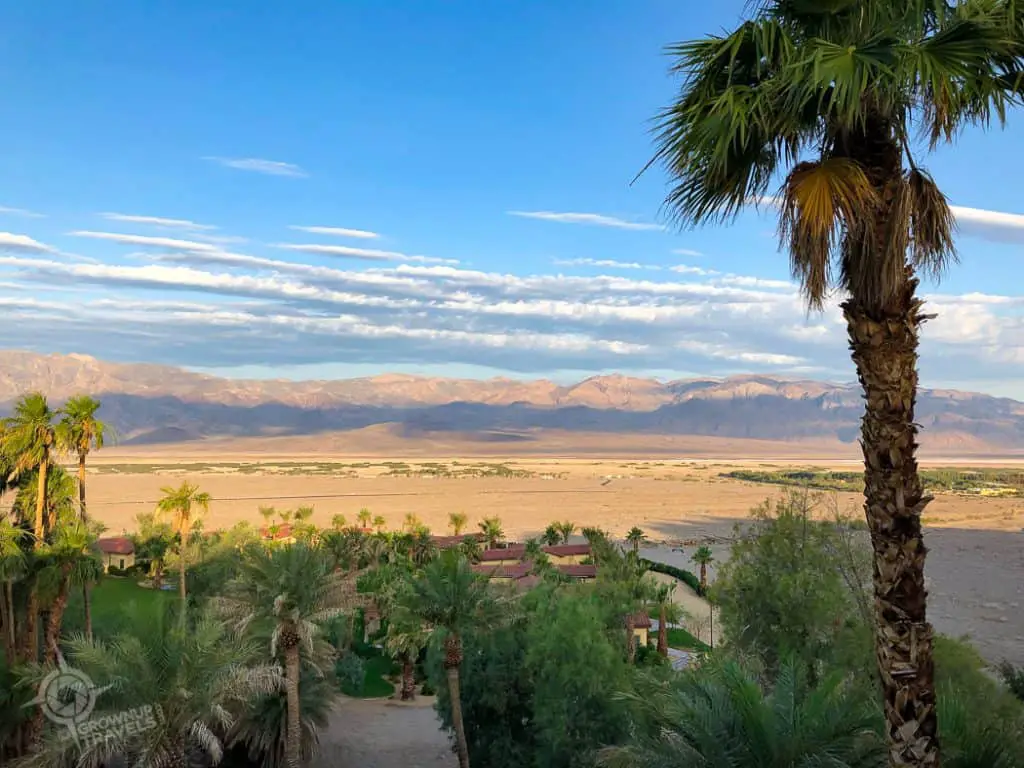
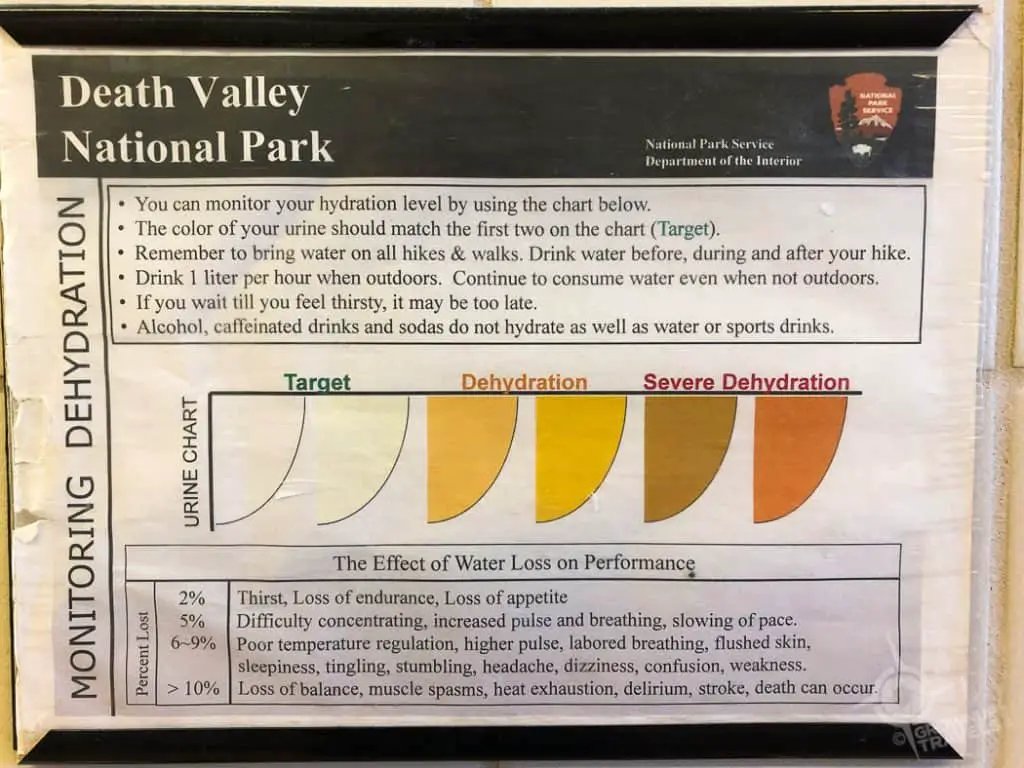
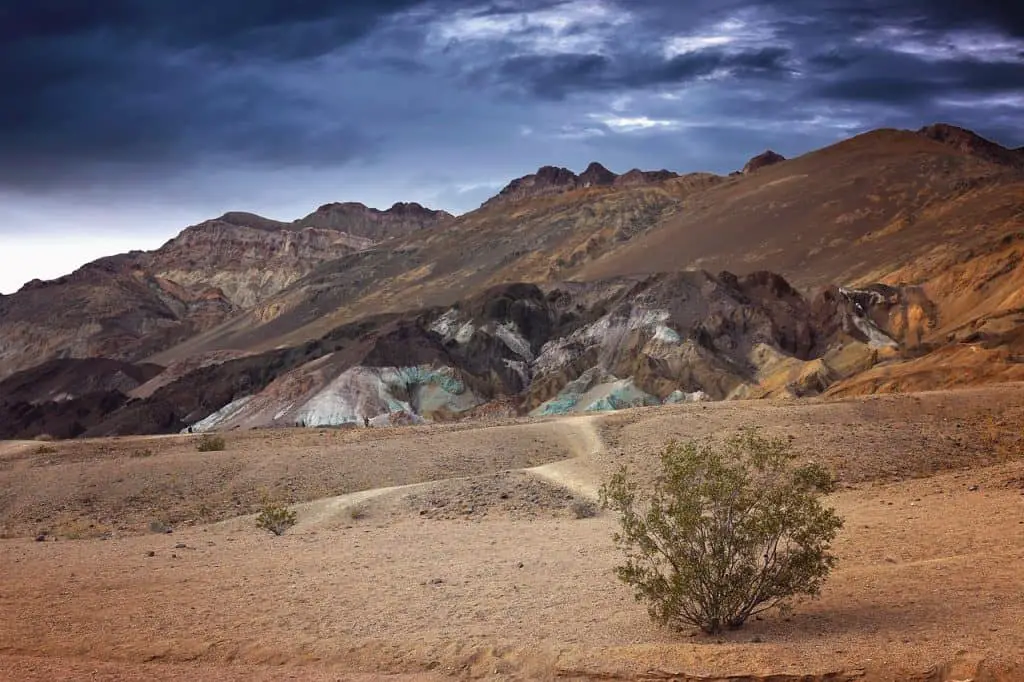
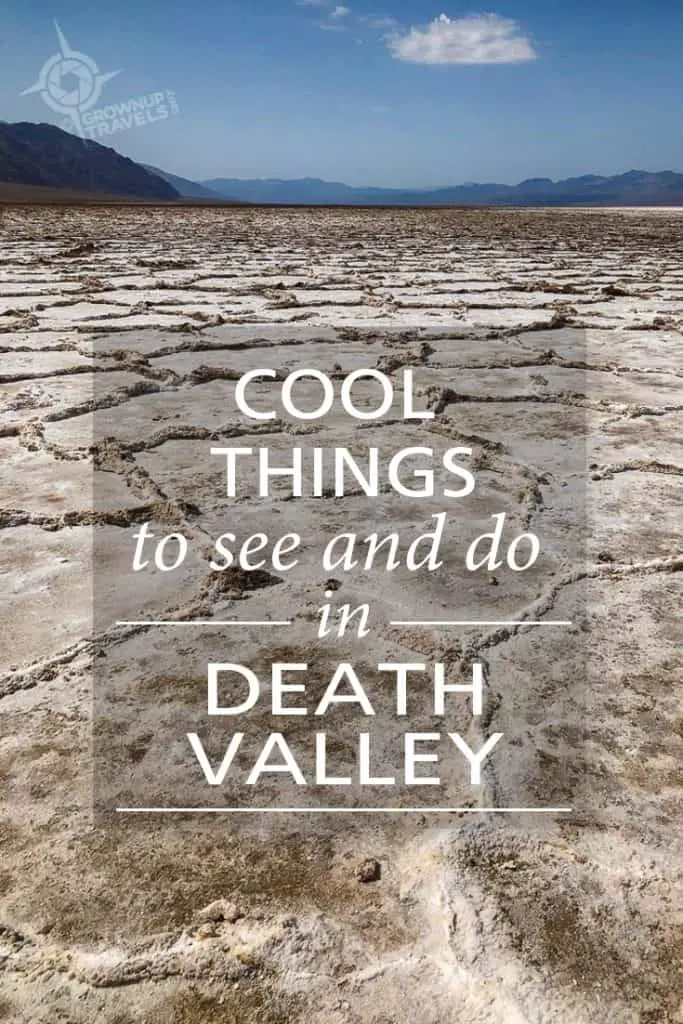

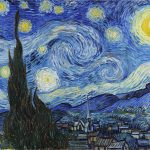
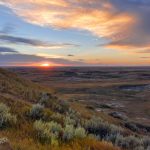
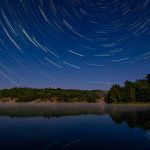
![My [Rhymes with ‘Bucket’] List](https://www.grownuptravels.com/wp-content/uploads/2013/07/skydivingJane1-150x150.jpg)






We’re huge U2 fans and had no idea about their Joshua tree. And Boraxo, 20 Mule Team Borax……had forgotten all about them. We love the scenery in the desert and have visited others, but have yet to do Death Valley. Thanks for all the info.
Glad you enjoyed the post. I was surprised myself by the whole U2 connection and by the Oasis we found right in the middle of the Valley. Definitely over delivered on my expectations.